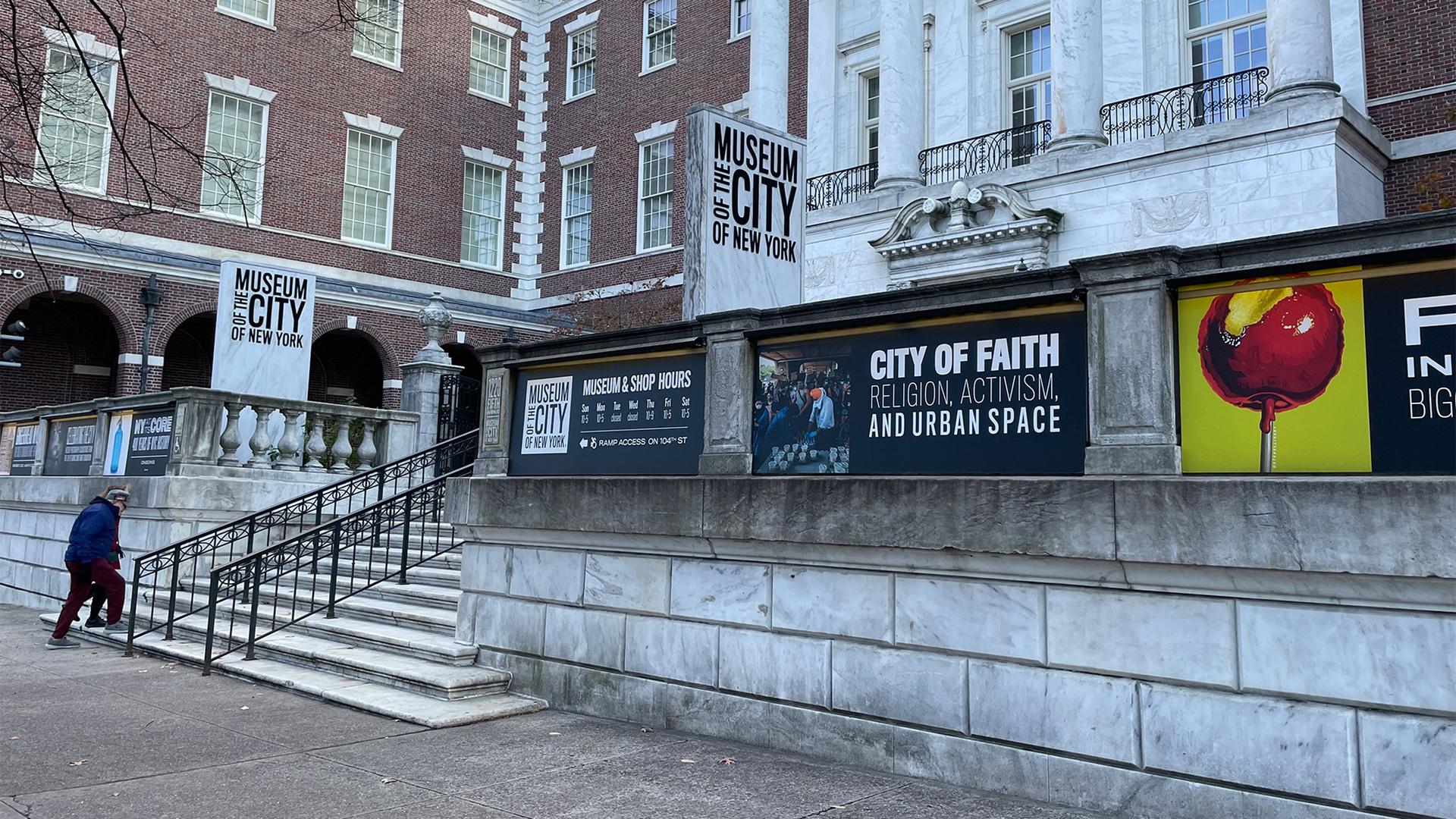New York City is known for its Broadway musicals, Wall Street, the Yankees and its happening nightlife. There’s something, though, that people don’t generally associate with the Big Apple — religion. A new museum exhibit highlights sacred spaces in a city that’s often seen as broadly secular.
Azra Dawood, an architect, historian and curator, designed “City of Faith: Religion, Activism and Urban Space” an exhibition currently on display at the Museum of the City of New York through Sept. 18. It takes a deeper look at the city’s religious roots alongside its immigrant experience, with a focus on the South Asian community following the attacks of 9/11.
“New York is as religious as part of the Bible Belt, with the difference being the city’s specific demographic makeup,” Dawood said during a panel discussion at the museum about the exhibit in December.
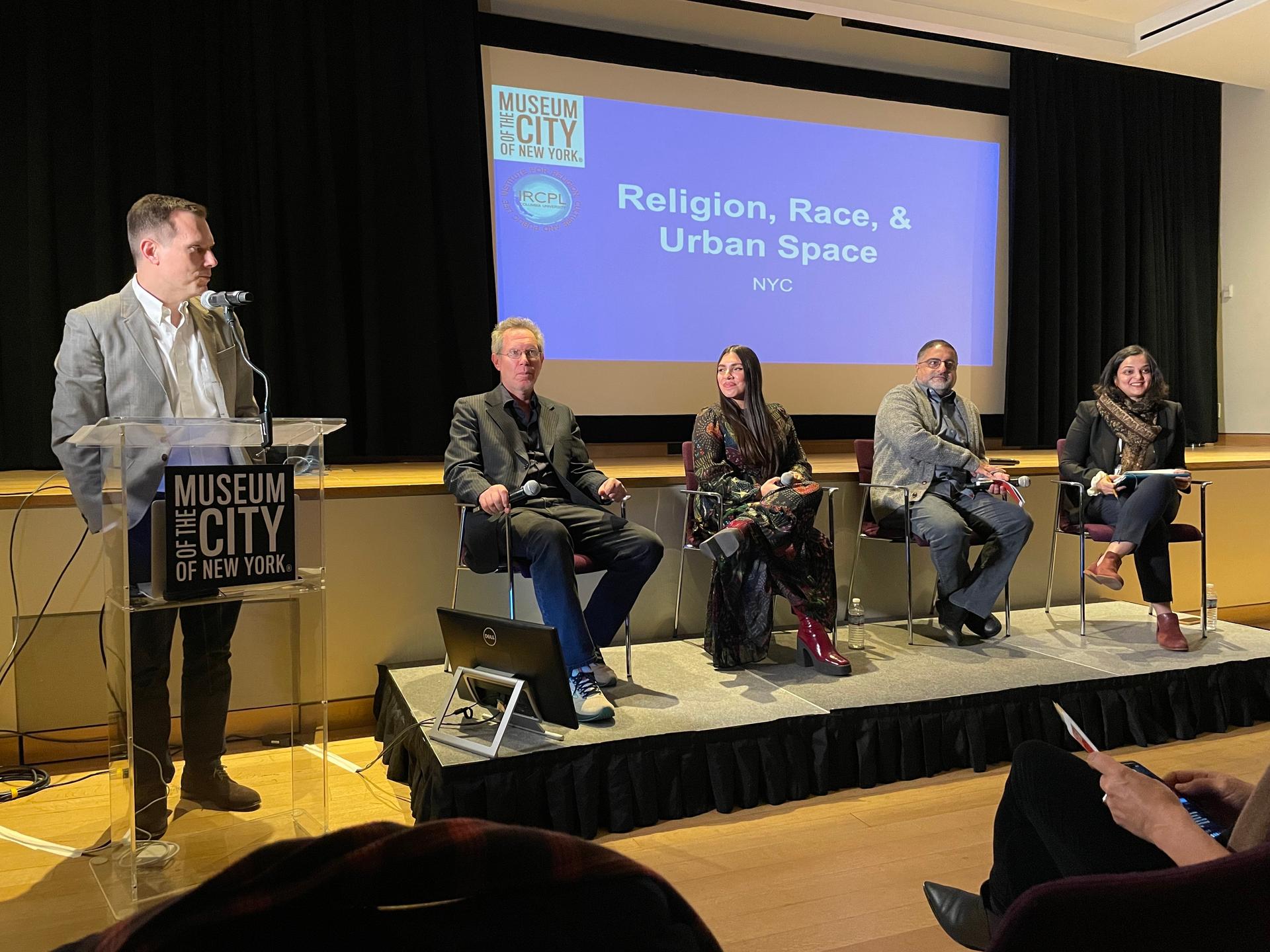
As an architectural historian, Dawood said she looks at built environments through the lens of religion and race, as well as the themes of empire and philanthropy. In the past, her work has focused on Protestantism, so she wanted to take discussions on religion and race in a different direction with this exhibit.
“What we’re seeing in the history of the city is a series of communities arriving or growing in number.”
“The city’s ‘fathers’ favored Protestantism. Later, when Catholic and Jewish communities arrived and grew in numbers, they, too, had to make space for themselves, and they too, had to struggle,” she told The World.
“It’s a very well-documented struggle for both communities. And so, I think what we’re seeing in the history of the city is a series of communities arriving or growing in number.”
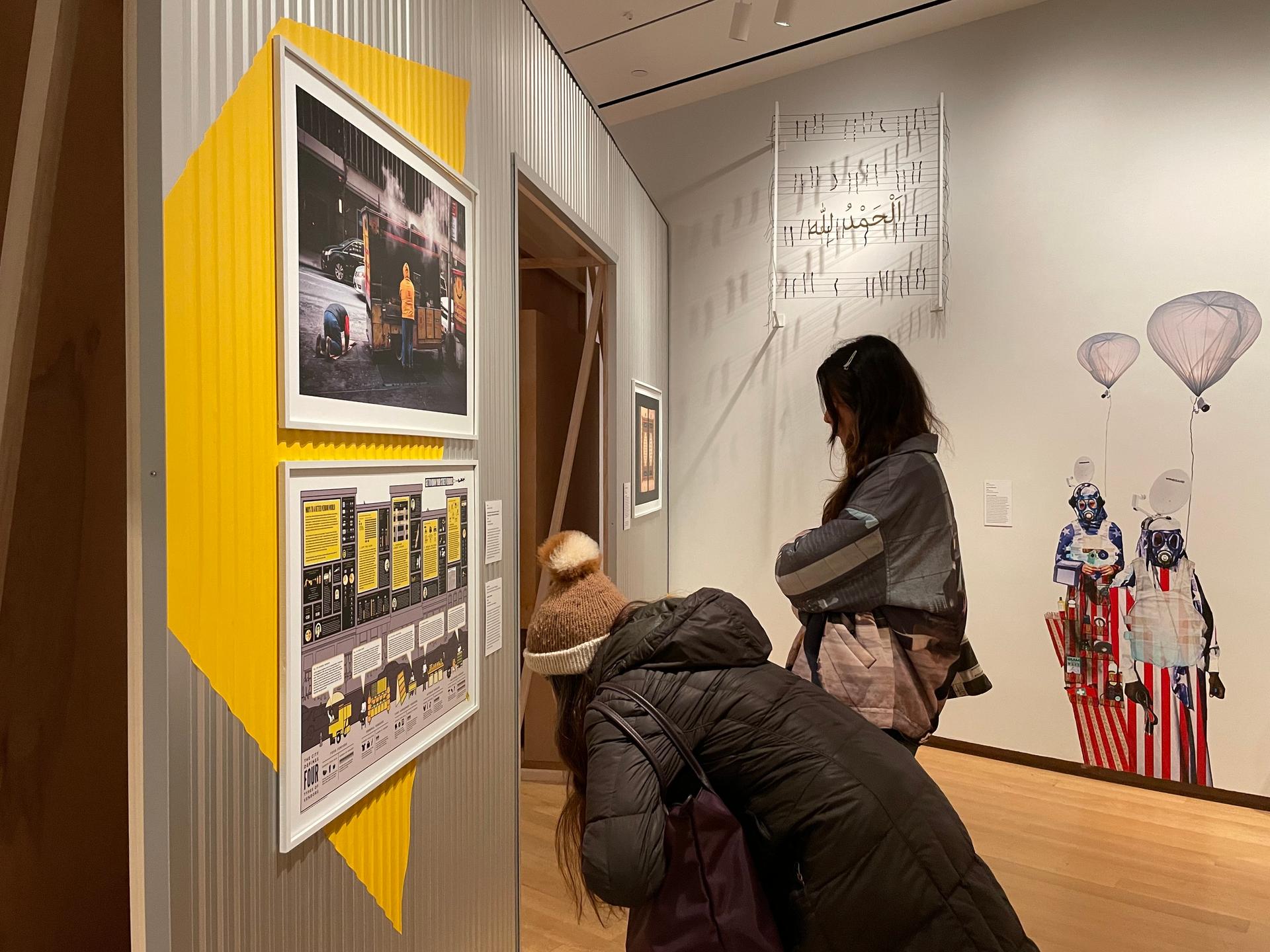
She explained that Muslims have been in New York for hundreds of years, but that the Muslim community also had to make space for themselves. That process hasn’t been easy, especially in the aftermath of the attacks on Sept. 11, 2001, which directly targeted New York.
The Muslim community has faced challenges such as police surveillance, racial profiling and hate crimes. Attacks on members of the community even spilled over to others perceived to be Muslim, including Sikhs and Hindus. One example was Sunando Sen, a Hindu immigrant from India, who was killed in 2012, after being pushed in front of an oncoming subway train.
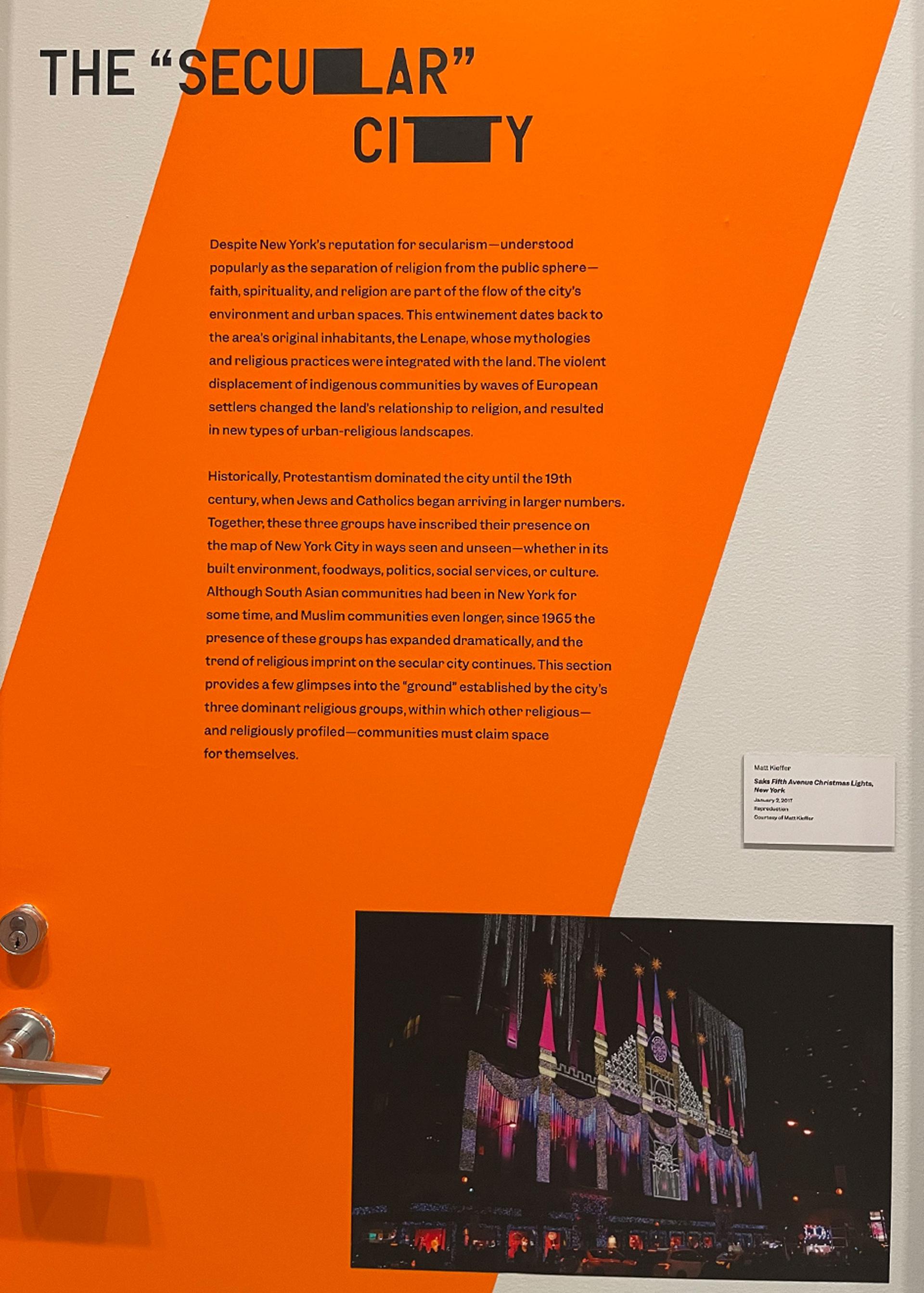
“I think it’s really poignant to look at this part of New York City,” said Shelley Yu, a Columbia University student who visited the exhibit.
“I had never known of this incident before, and to hear it being explained so poignantly, it was very touching and very sobering to hear.”
That story was conveyed through a video presentation, with images on one screen and simple white text on another black screen that explained one line at a time how the incident and trial unfolded.
It’s part of an entire multimedia, sensory experience that includes photos, audio recordings, poetry, artwork and even a scent installation.
A combination of musk, frankincense, sandalwood and rose greets visitors as they enter. The sweet fusion of fragrances — ones that are often found inside mosques — was designed by the Brooklyn-based perfumer and author, Tanaïs.
In another interactive display, visitors encounter a set of bright, red folders mounted on the wall, each with a phrase written on top that’s connected to the 9/11 aftermath, such as “Blanket Surveillance,” “Repercussions” or “History Repeating.”
The folders contain files that people can pick up and read through.
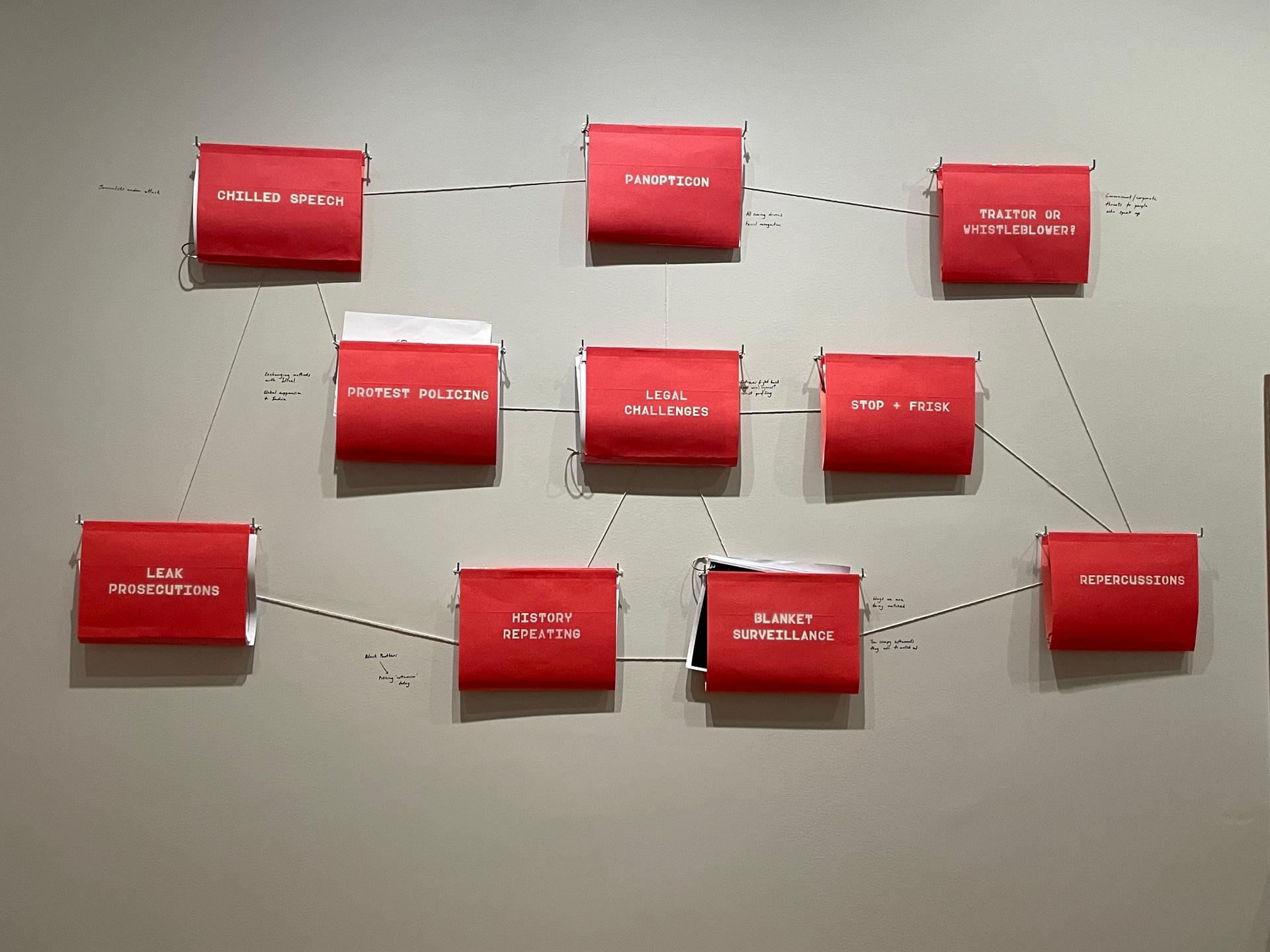
“Being part of a marginalized identity means that your body becomes political in and of itself, and that makes you have a heightened visibility,” said Grey Bakwin, an architecture student from Barnard College, who also visited the exhibit.
“I think it’s incredibly important for the history of the city to be talked about and discussed and displayed.”
“And then, at the same time, being pushed and peripheralized means that there’s less visibility. I think it’s incredibly important for the history of the city to be talked about and discussed and displayed.”
A range of immigrant experiences
“City of Faith” includes a range of religious immigrant experiences, like the ones Dawood mentioned.
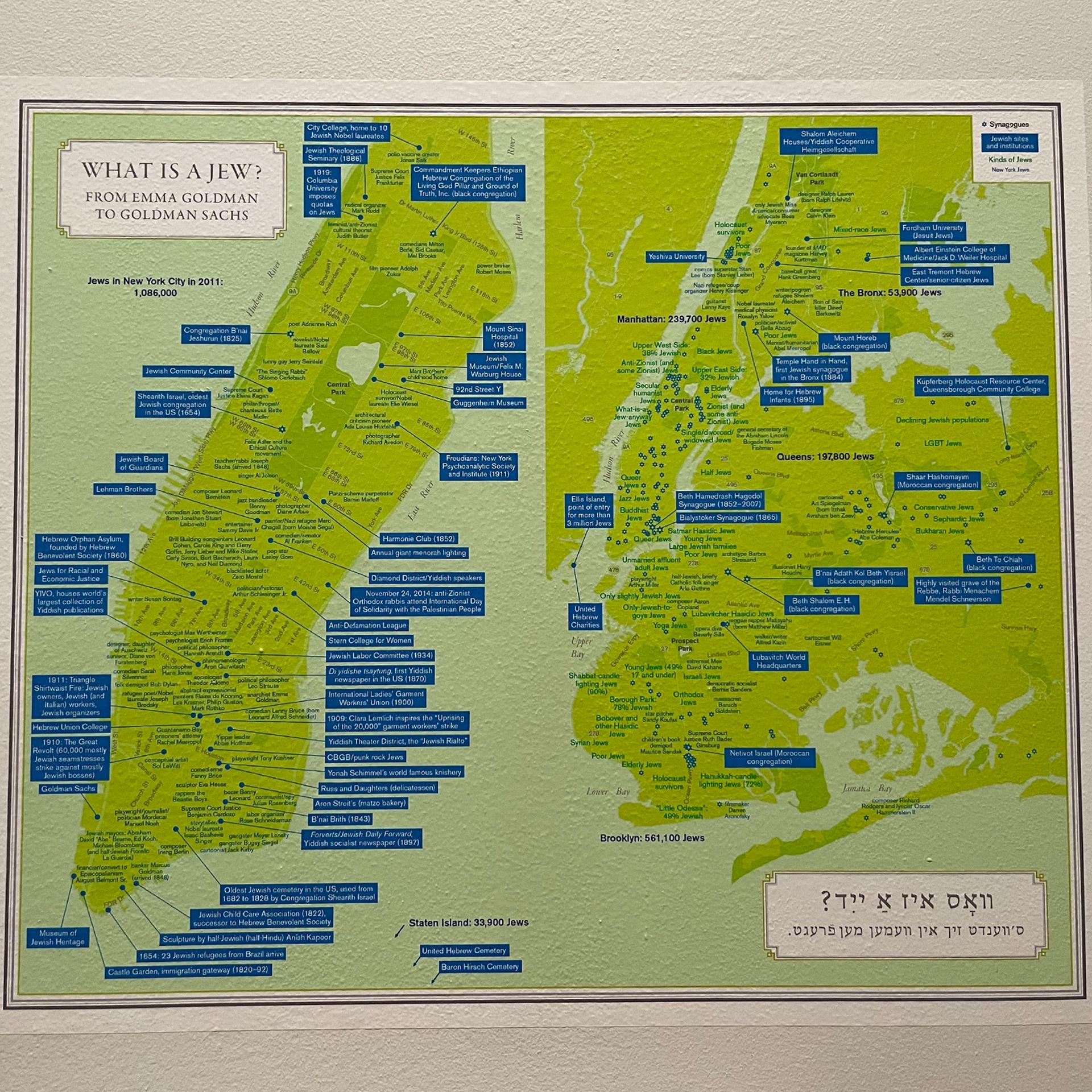
It incorporates a map of Jewish heritage sites and institutions across the city, along with an image of a 19th-century Catholic school.
To this day, there are many churches nestled throughout New York. The most famous might just be the towering St. Patrick’s Cathedral, found in the heart of midtown Manhattan.
There are also the Church of Saint Mary the Virgin in Times Square and the Trinity Church Wall Street in the financial district.
Business magnate and philanthropist John D. Rockefeller was a big contributor to the city’s religious architecture. One example is the Riverside Church near Columbia University.
People likely don’t know that the iconic Rockefeller Center was, at one point, Dawood said, supposed to include religious space.
“There was a chapel planned for the very top of the building,” she explained.
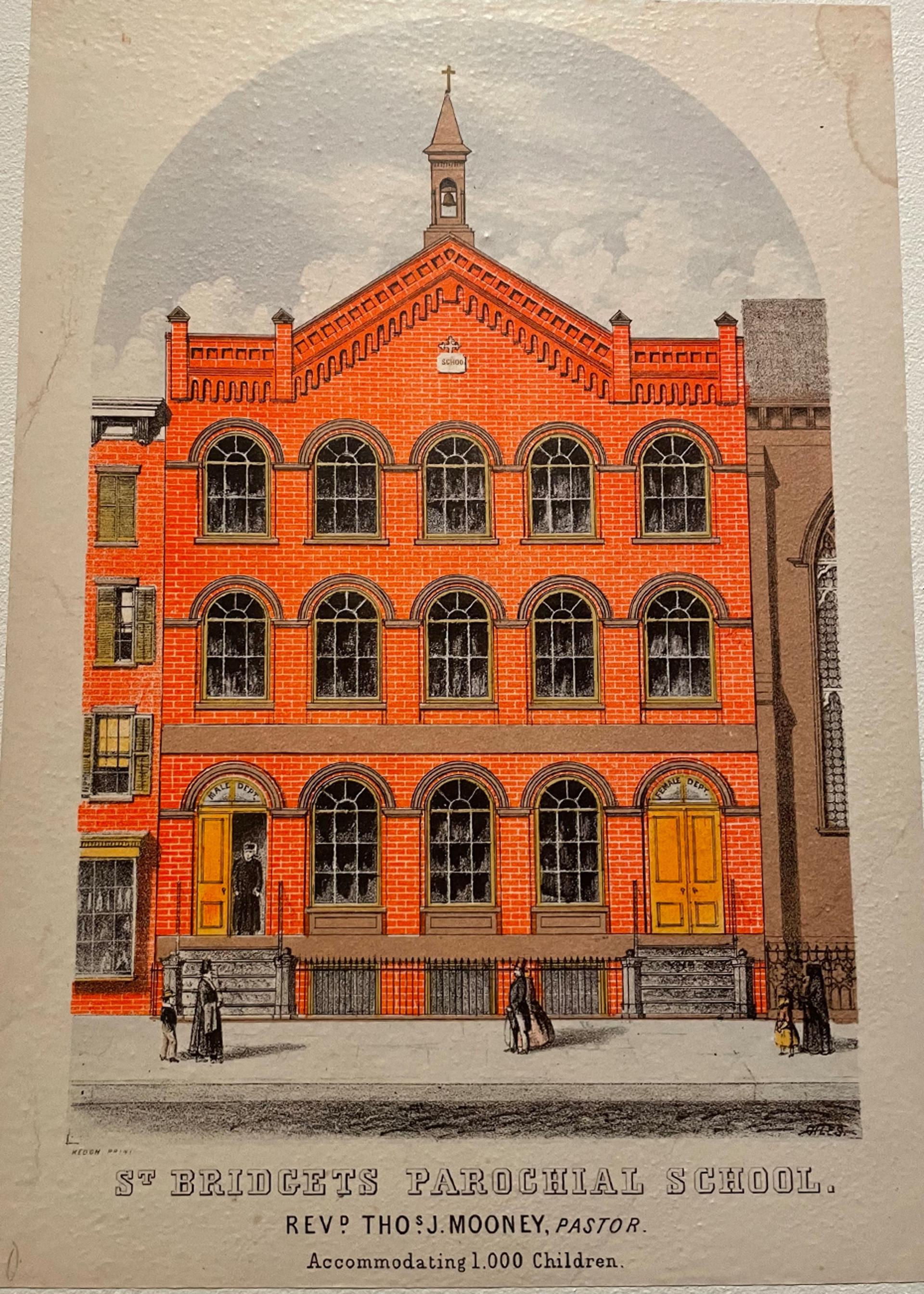
Even though it was never built, “this idea that there was a chapel right at the top of this real-estate venture is very interesting.”
Dawood’s career has taken her back and forth across continents. She earned a PhD at the Massachusetts Institute of Technology and spent a year teaching architecture at the University of Houston. She also taught in her hometown of Karachi, where she worked with Pakistan’s first female architect, Yasmeen Lari, during a summer internship at the Heritage Foundation. Lari has been recognized for her extensive humanitarian work and Dawood said it was meaningful to be working for someone like her, who helped her see her own hometown in a new way.
“You develop a connection with the city, and [you learn] more about [it] in a way than you would if you simply grew up there,” she said.
Seeing things from different perspectives, she said, is also a key message that she’s trying to convey in “City of Faith.”
Related: New exhibit shows how Islamic art influenced French luxury jewelry maker Cartier
